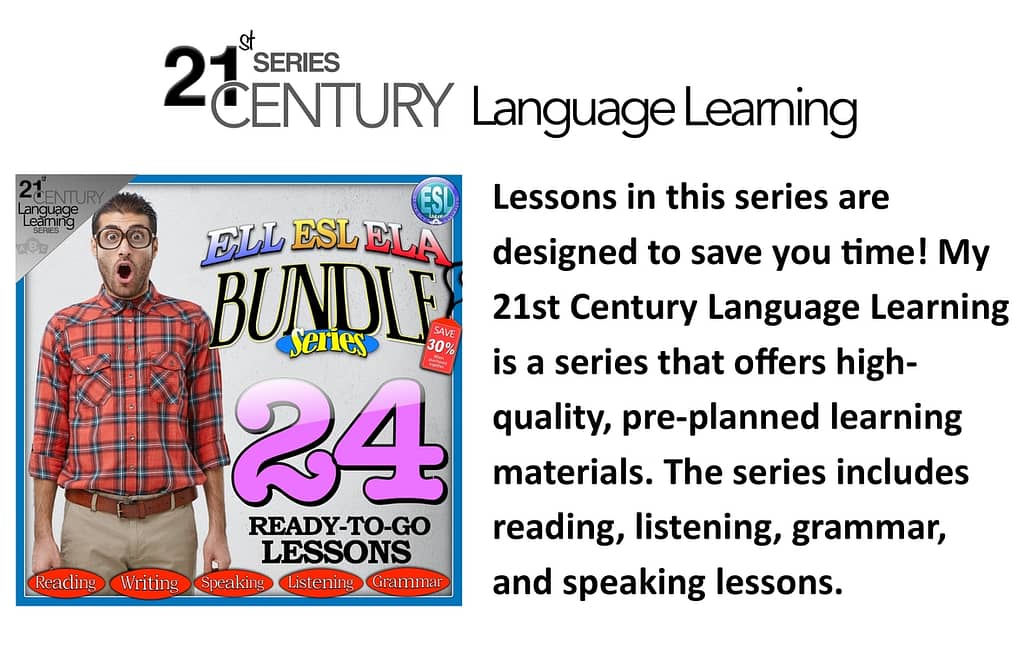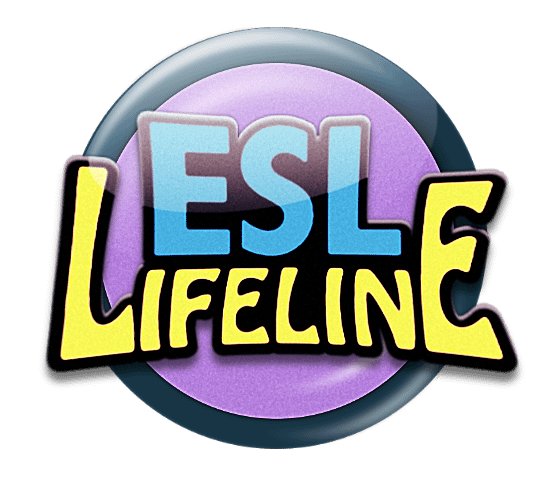There’s a lot that goes into teaching, especially when teaching to students whose first language is other than English. This post will give you 10 tried and true secrets to teaching ELLs that you can use for the rest of your career. Without further ado, let’s dive into my 10 secrets of teaching English language learners.
1. Digitize It!
During any teaching career, you will undoubtedly be asked to do something more than once. That may be the biggest understatement of the century. Everything that you do is repeatable so write down everything you do each day so you do not have to reinvent it later. This method can save you from losing sleep, hair and your mind. Simply put: write it down so tomorrow you do not have to.
How to do it?
The secret is in the discipline of the task, not the final product. Take the time to create thorough, detailed templates of what you do or will do everyday – lesson aims, problems, solutions, expectations – and familiarize yourself with the logistics of it. That way you can add, create, and notate on it simply and efficiently.

2. Show Don’t Tell
Everything is presentation. That’s worth repeating. Everything is presentation. All else is just periphery. Differentiation of color, novel design, clever use of font, and imagery: our brains are drawn to the way information is presented BEFORE we delve into the actual content and sophistication of its intent. Don’t get me wrong, content and quality are indivisible parts of anything that can be considered worthy of your time. But remember this truism: as a 21st century teacher, you are competing against students who are constantly drawn to the ubiquity of “better things to do”. Your lesson needs to dazzle the masses and a way of doing that is presenting your lesson as memorably as possible.
How to do it?
Start planning a lesson by thinking about how to explain it in a way that you does not require the use of words. Pictures and all other visual elements you attach to your lessons are the roots that your lesson stems from. Begin each class with a visual example. ‘Show’ don’t ‘tell’.
3. Speak Visually
Pictures speak a thousand times more effectively than our words. In the classroom, your students are constantly seeking visual reinforcement – and stimulus – to help anchor them back into a reality in which they can relate to. Releasing a verbal hurricane in your classroom causes needless linguistic casualties that can have the residual effect of making people hate learning. Your students will not understand 100% of everything you say, so a support system to help guide them back into the lesson when they go astray –and they will go astray, it is only a matter of when – is essential.
How to do it?
It is important to become a student of search engines and learn how to make them work for you. To do this, do not only search for general elements like happy and sad, or cat and dog. Instead of typing ‘cat’ into a search engine, type ‘cat stuck in toilet’ and you will soon be laughing with a childish intensity you thought you had lost decades ago. Once you search for pictures with some kind of context – cat in toilet, dog looking sad, father watching son graduate – you immediately create a story to go with it and then, almost by accident, you create a memorable hook that you can use for your class.
4. Think of Your Lesson as a Topic, NOT a Language Point
It is exhausting to teach a lesson as if you were taking a treacherous journey across the tracks of linguistics where all you have to rely on for explanation is the language itself. Most ESL teachers are not linguists and, more to the point, the aptitude to teach a proper linguistics class and be a student of one takes a dedication that only a tenure and postgraduate degree can compensate for. Come to each class as an explorer that steers your class around the shores of an interesting topic. You will find that – depending on the level – most ESL students will know quite a bit on a wide range of topics, but only lack the vocabulary to discuss it intelligently. If you think of yourself as teaching a topic, the language points required to traverse the terrain of that topic (grammar, vocabulary) end up revealing themselves during your journey into it; this makes it easier for you to think about the quality of education without falling into the trap of teaching out of context and only in generalities.
How to do it simply
Always start class with an engaging hook that draws your students into the lesson implicitly, while sieving the language out slowly and methodically so as not to shock your class. When planning your lesson, look for something about the topic that few people are aware of and present that in the beginning, slowly, keeping something hidden. One of the best ways to do this is to use a KWL chart (Know, Want to Know, Learned). This can be done individually or in groups to maximize communication. If students know nothing about the topic, pair them with someone who does. A thoughtful and well-executed topic can compensate for a less-stimulating portion of a lesson. If you sell students on your lesson early, you can hook them for the long-term and the principles of acquisition can more easily work their intended effect.
5: Mold Lessons into Narratives
Ultimately, your students are looking to you to entertain them. That’s a daunting task considering most ESL classrooms have anywhere from 15+ students. Believe it or not, even in a small classroom with a low number of pupils (think 2-3 students) the demands can even be greater. Attention spans dwindle whenever a teacher says, “Today we are going to study grammar,” or “Let’s listen and answer questions.” Your lessons will always suffer from a deficit of quality if they lack any kind of anchor in a world that your students might relate to. Put simply: if your lessons tell a story they are easier to remember, more likely to be responded to, and simpler to plan for.
How to do it simply
Crafting a lesson that is story-based is not innately difficult. It is important to remember that stories have a beginning, middle and ending that all connect in a logical (usually linear) format. Narrative lessons can be introduced slowly and methodically and, depending on the confidence level of the teacher, could have content-gaps that the class can fill in during instruction (this could even be grammar points, as well). The beginning of a narrative lesson usually introduces your main character or characters. Then, add some kind of conflict into the story during the middle (content delivery), and leave it open for students to end themselves during the final acts of your lesson.
6: Command the Silence
It is possible to command silence in a way that makes it effective for instruction and classroom management. What does command of silence look like? Students of the late Sir Richard Feynman’s class used to entertain each other with stories of how he would strut methodically into a classroom, sit smiling to himself for a few minutes, as if he had the secrets to life nobody else had. Then, whenever he did speak, the class was so eager to listen that all he needed to do was, simply, speak and the class was hypnotized. That is command of silence. There is an infinite amount of opportunities to add to the noise of a language classroom and, what is more, your students expect it of you. Do the opposite. Be silent and teach non-linearly (more on that in number 7) and the silence will bend to your will.
How to do It simply
The secret is in knowing how to fill pauses. It is easier to talk too much than too little as a teacher, and the dreaded ‘silent moment’ after a challenging question is the primary reason most teachers talk too much in the first place, nervously inserting their voice where silence threatens to reveal their lack of preparation. When silent moments happen, relax your expression, and make eye contact with your students. ESL students always need to be given more time to think because first they need time to find the right words, and only after they have found them can they posit an answer to the question. Allow the silence to wash over your class calmly while you adopt a look of serene intellectual awareness and your students will feel safer at traversing the plains of the unknown.
7: Great Instruction is Perpendicular, Not Parallel
The magician approaches center stage with careful, meticulously calculated steps. In his right hand, he has a black top hat. The audience know all too well he would miraculously pull a rabbit out of that hat soon. Gripping his hat tightly, he theatrically throws his free hand up into the air and then quickly thrusts it deep into the empty hat. After a pregnant moment of silence, the magician withdraws his hand to reveal, NOT the expected rabbit, but a comically written note that reads, “We need to talk about my annual performance bonus.” Great teaching, like performance, is perpendicular, not parallel. In other words, doing what is least expected has the greatest impact and leaves the longest impression. Doing things against the grain and doing what is least expected will imprint your legacy on your class and, like commanding silence, leave them wanting more.
How to do it simply
When thinking of new ways to go against expectations in creating your lessons, it is helpful to make a list of what other people would do in certain situations – the answers, then, often times highlights themselves. For example: most teachers write information on the board but few hide clues around the classroom and have students become detectives and discover them on their own. Memorable instruction means going against the current and offering the unexpected, making it personal, keeping your content up-to-date with your demographic, and adding a sense of personality to your lessons. This transforms your teaching into something that is talked and makes you indispensable.

8: Make it Active
Most students of ESL are eager to get out of their seats and move around just to break up the monotony in their day. Considering the principles of Howard Gardner, some people learn better when movement is involved. Engaging your students actively lifts your lesson off the page and adds multisensory features to the learning environment. Keep your class moving and interacting with each other during their short time together and you can avoid the soft glow of other distractions and the gentle nudge of boredom.
How to do it simply
When planning a kinesthetic activity, always remember the 3 P’s. Post, Play, and Position. Post: Most grammar points and questions about receptive tasks can be posted around the room for students to discover while in motion. Play: A great many activities are available for taking any type of content and making it a mingle activity or other interactive game where students are in motion. Position: Not everything in the classroom has to be front-and-center. Take what you would normally write on the board and place it in a different part of the classroom – even outside of the classroom – and have your class move to it in order to learn more about it. The classroom is not a one-dimensional tunnel of delivery but a three-dimensional space that can be used to post information, play games or, even, position information unconventionally in.
9: Always Have a Lead-in
Start your class with a bang, not a whimper. Students expect ESL instruction to be parallel, in that they expect to be taught language in a certain way. The best way to go against the grain is starting your lesson with an engaging opener or lead-in that enraptures your class and gets them thinking along the same spectrum as you. Once you have them hooked, you are then able to reel them into the actual linguistic elements in a way that assuages the complexity of grammar and other complicated language points. With good lead-ins, you no longer are moored into the ‘language teacher’ mold; you are transformed into a professor of astrology articulately pontificating on the dimensions of space and time, or into a wise historian delicately laying out the timelines of history to eager undergrads.
How to do it simply
Good lead-ins are based on specific, engaging topics. And anything can be a topic (see number 4 above). The Psychology of Memory is a good topic, for example. But with a simple tweak, it can become something more: Superpowers: How Memory is a Natural Superpower in Humans. Everything in the language class can be thought of as being a topic. Having a specific, engaging topic is as simple as asking yourself one question while planning your lesson: “When would I use this in real life?” The answer to this question is the frame-of-reference where you can start to carve your lead-in out of.
10: Give Them a Reason
Your students are always asking themselves, “Why are we doing this?” If you tell a student to do a task without attaching any sense of purpose to it you rob them of acquiring any true meaning from it. Tasks without meaning hold no intrinsic educational value because they lack any sense of realism. By attaching reasons to your tasks, you give yourself more authenticity as a teacher by making your students an active part of their lesson, instead of passive observes who are lost in the background. It raises the stakes by making them an indivisible part of its very existence.
How to do it simply
Giving your lesson context, leading-in properly, building stories into your lesson, and teaching in a way that gives your students a topic to learn rather than a grammar element to forget, all aid in attaching reason to your instruction and directions. Think of your lesson as a journey that can only be completed when your students have added their opinions and ideas to. This is where making your lessons into narratives helps immensely. Or even Flipping Your Instruction. Do not ask your students to write for no reason. Tell them, instead, that there is an impossible problem that nobody else has yet to find a solution to and you need their help solving it. Do not ask them to read a story or article. Instead, tell them that there is a secret hidden in the text that will help them in the future and their job is to uncover it.

